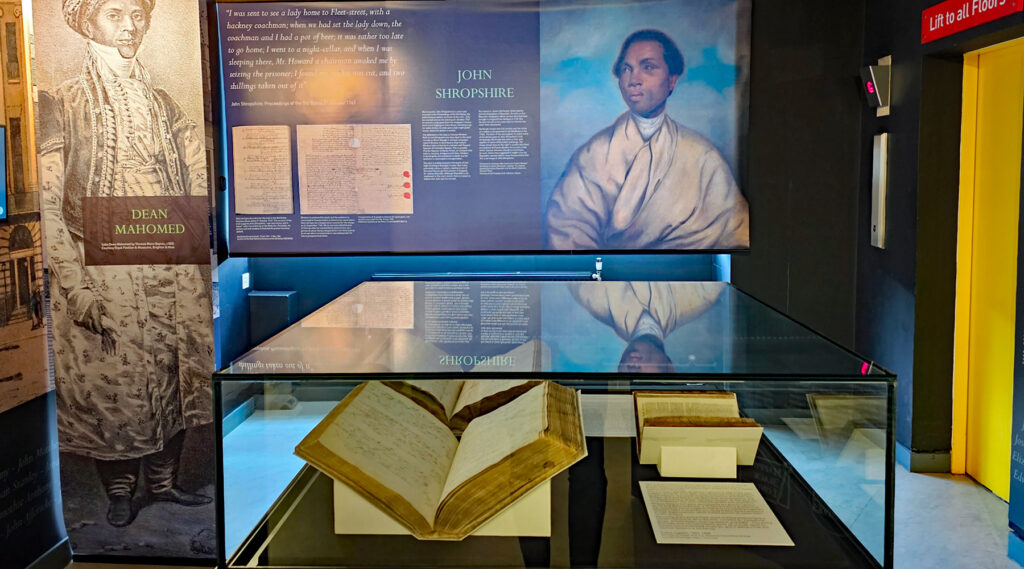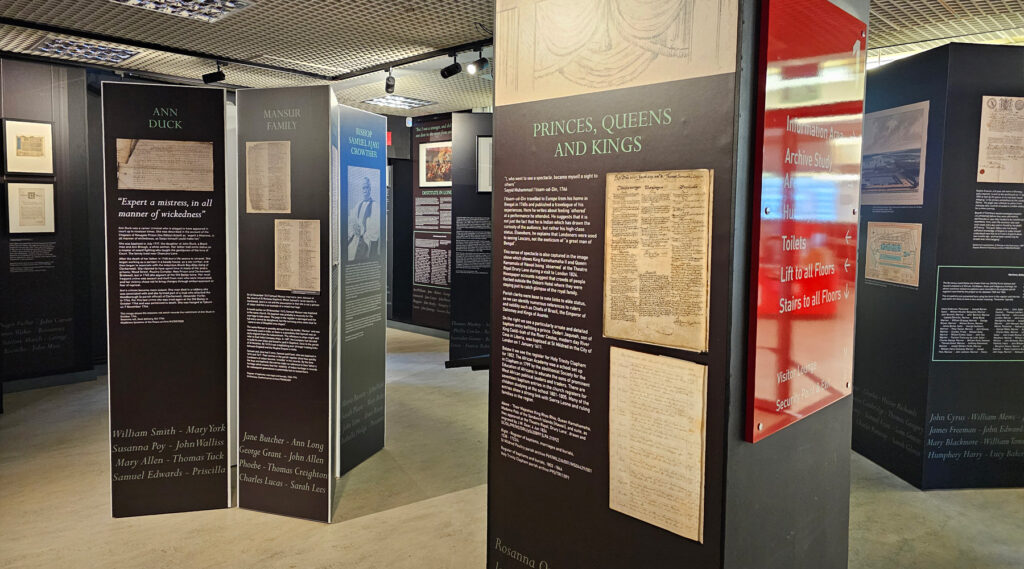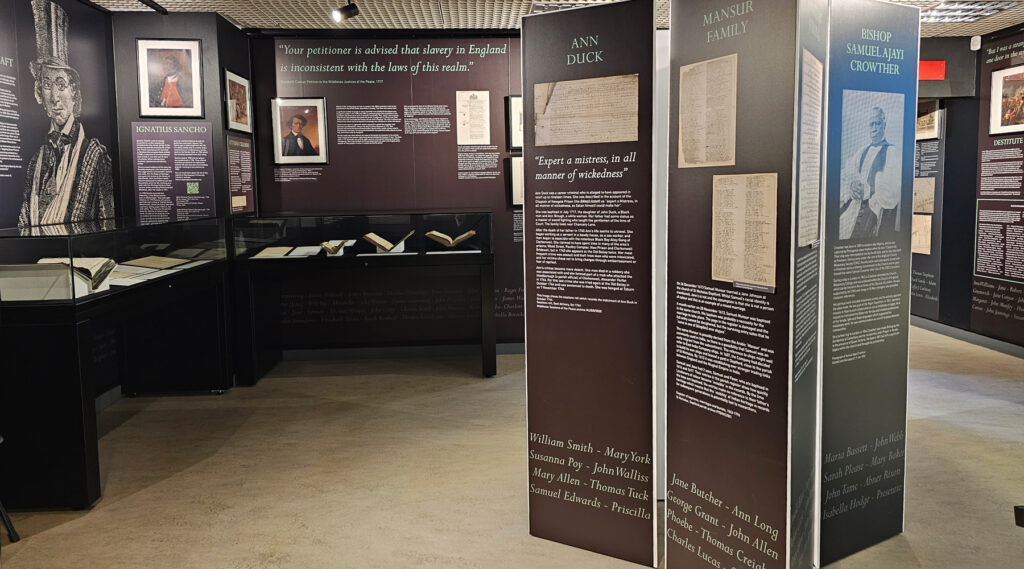The lives of Londoners who rarely feature in the history books, despite being a regular sight on the streets is the topic of a new exhibition at the London Metropolitan Archives. It tells the stories of Londoners of African, Caribbean, Asian and Indigenous heritage who lived and worked in the city between 1560 and 1860.
The exhibition is the result of an ongoing research project and aims to reveal London’s complex and long-standing diversity, which goes far further back in time than the famous Windrush arrivals.
So far they’ve detailed some 3,300 people who live in London, and the exhibition takes a look at some of the more interesting characters they’ve uncovered. Some of the stories may surprise people – in part for their, by the times, progressive approach, but less surprisingly, the prejudices.
There’s John Satia, who was brought to London as a slave, but was later apprenticed as a wood joiner, a typical career for a young man at the time, and in 1731, applied for and was granted the Freedom of the City of London. However, a week later the City for some reason then decides to ban Black people from ever applying for the Freedom again.
There’s Dean Mahomed, from India, who may have set up the first Indian curry house in London, in 1810, and the remarkably named George Augustus Polgreen Bridgetower, who was described as an African Prince, but was actually the son of a Polish servant, and was a noted musician who ended up living in Marylebone.
Naturally, not everyone was a success, and it’s interesting to learn that there was a Committee for the Relief of the Black Poor in existence in the 1780s.
One of the fascinating records on show is about the silk weaver, Reasonable Blackman, which seems more descriptive than most, and may have been England’s first financially independent man of African origin, working at the time of Queen Elizabeth I. His trade is likely to have been creating costumes for the Southwark playhouses.
Olaudah Equiano, a key figure in the movement to abolish slavery and member of the Sons of Africa, features with his daughter Joanna. The London life and family of Ellen and William Craft is documented, following their escape from enslavement, and a voting record of Ignatius Sancho from 1774, believed to be the first time that a person of African heritage voted in an election in Britain, is displayed for the first time.
Naturally for an exhibition based on documents, there are few physical objects to see here, but there are a lot of maps and contemporary drawings alongside the text to put the archival discoveries into context.
We also meet many less familiar Londoners discovered by the research project including Katherine Auker, who successfully petitioned to be released from her enslaver in 1690. A man from Bengal known as John Morgan who escorts a cheetah to London in the 1760s and Prince Dederi Jaquoah who was baptised in the City of London in 1611.
Overall, it’s a very lengthy exhibition if you were to read all of it, that that this is just a tiny sample of the people who have been uncovered in the research should remind us just how much of a cultural melting pot London has always been.
The exhibition, Unforgotten Lives is at the London Metroplitian Archives in Clerkenwell until March 2024.
Entry is free, although you will need to sign in, and leave your bag in the locker before going to the main display as it’s next to the reading room, where bags are banned.
It’s generally open Mon-Thur, late to 7pm on Wed and opens roughly one Saturday a month.











Leave a Reply